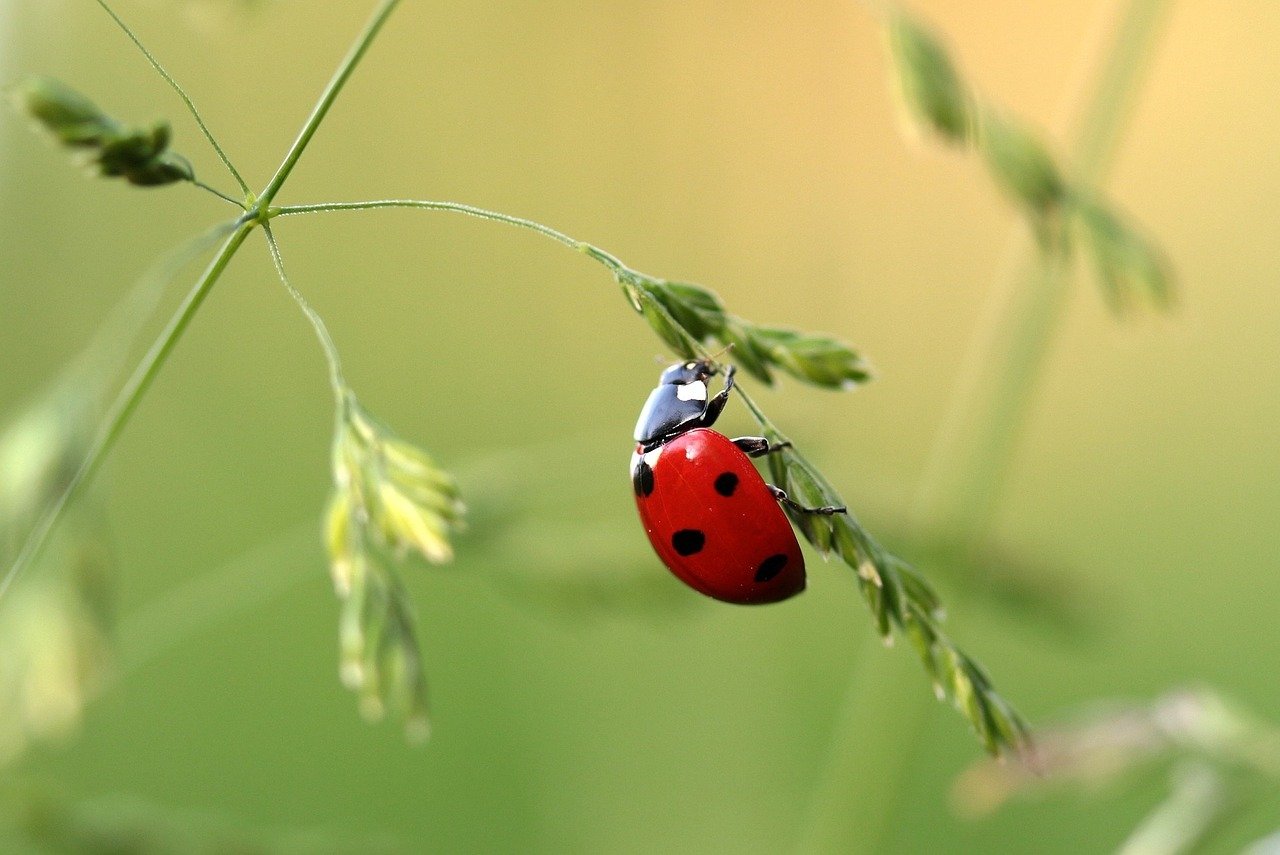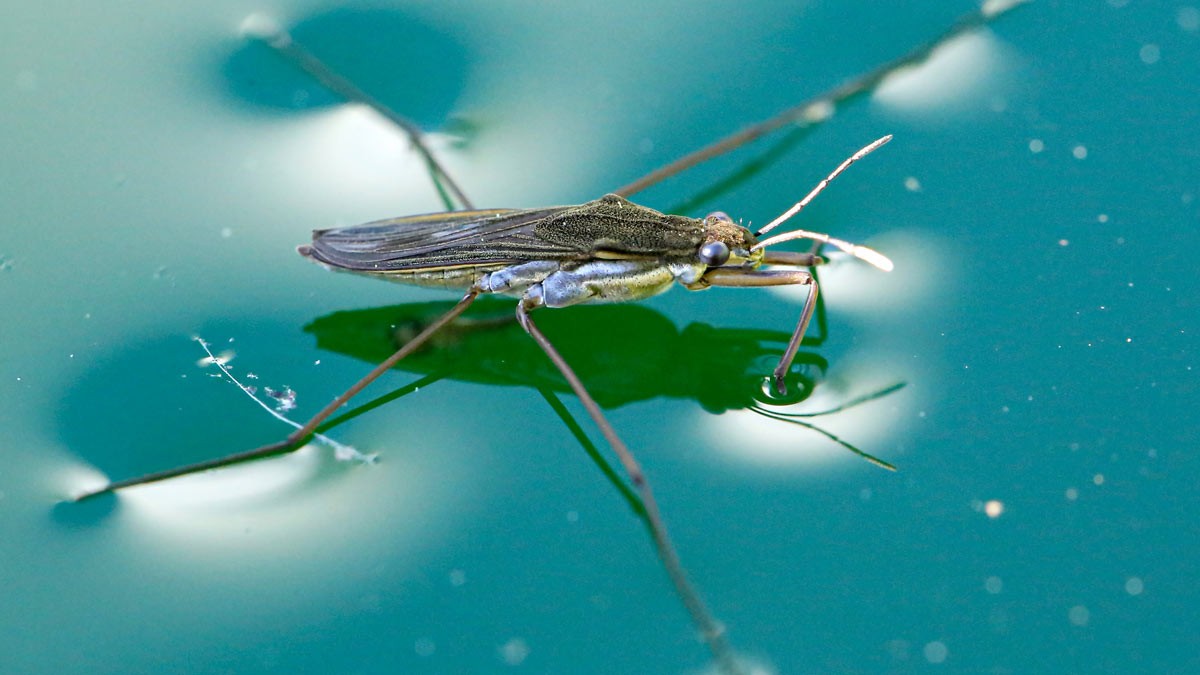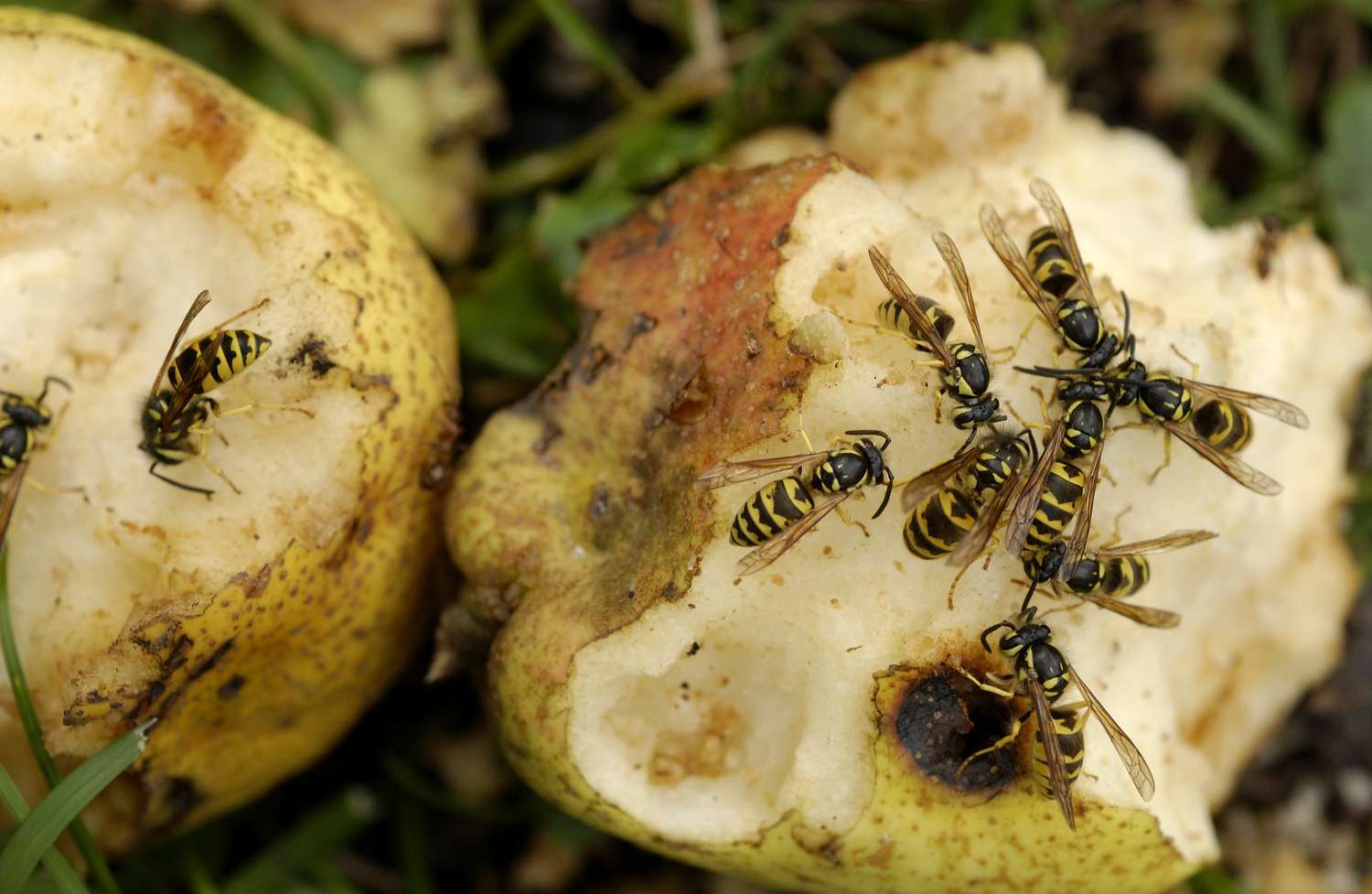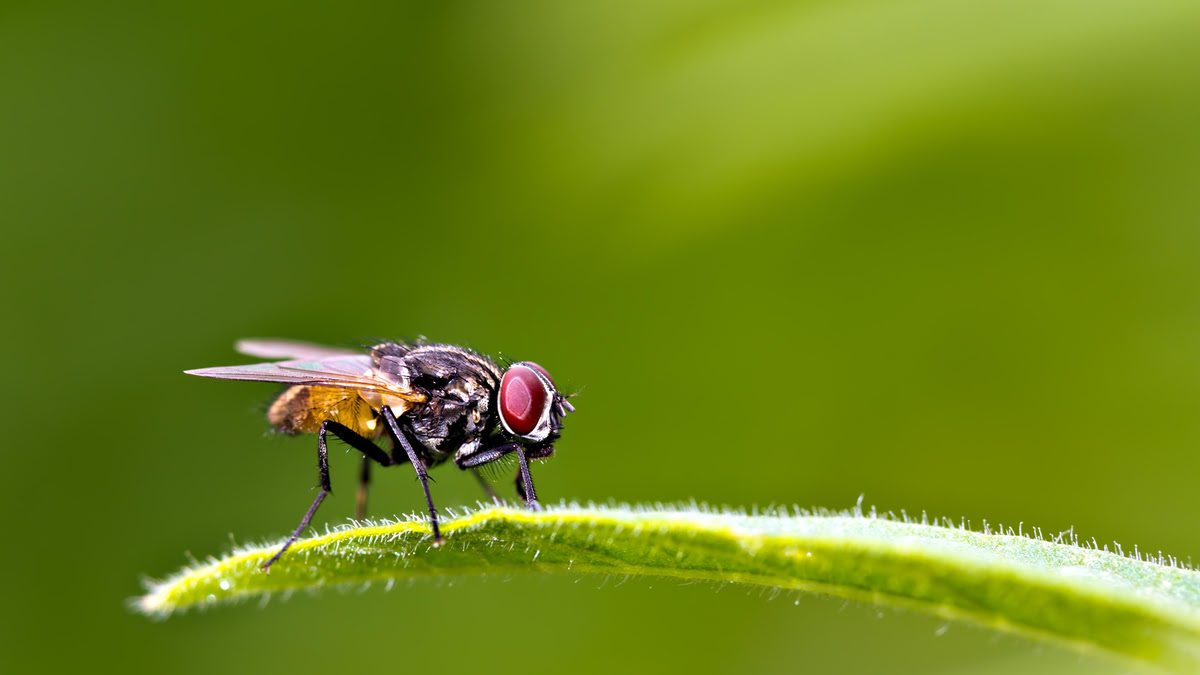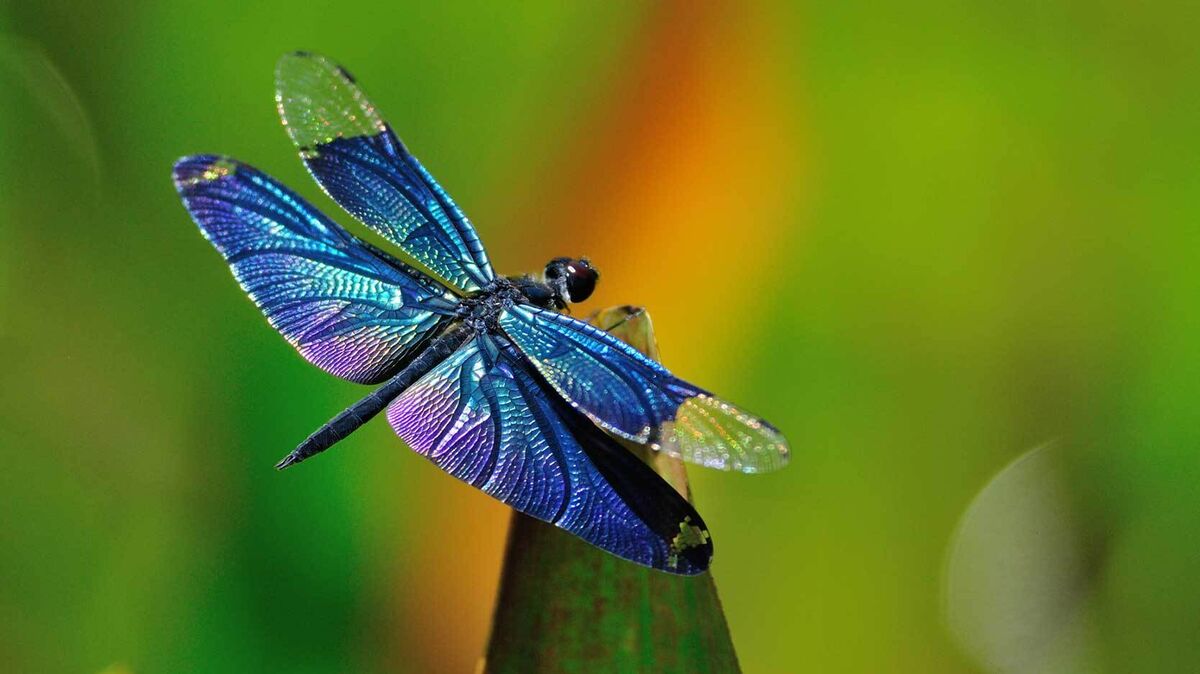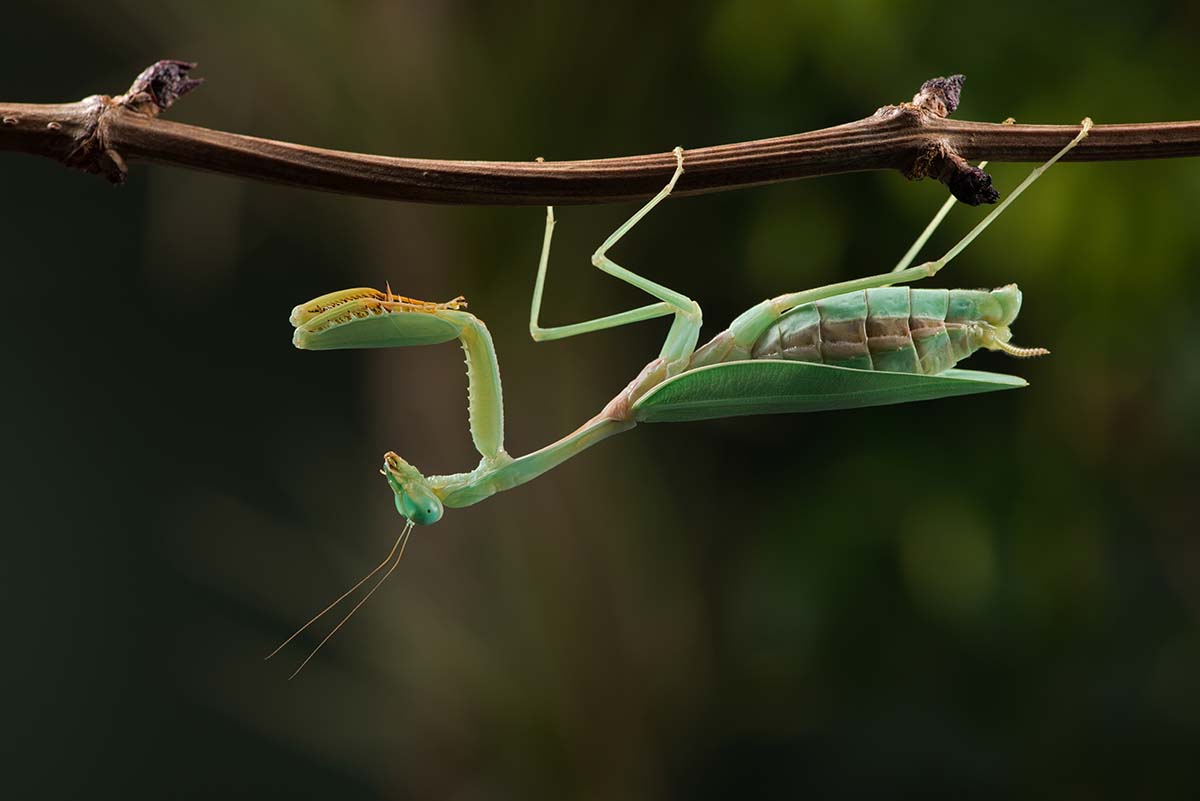Home>Gardening News and Trends>Latest News>How Do Insects See
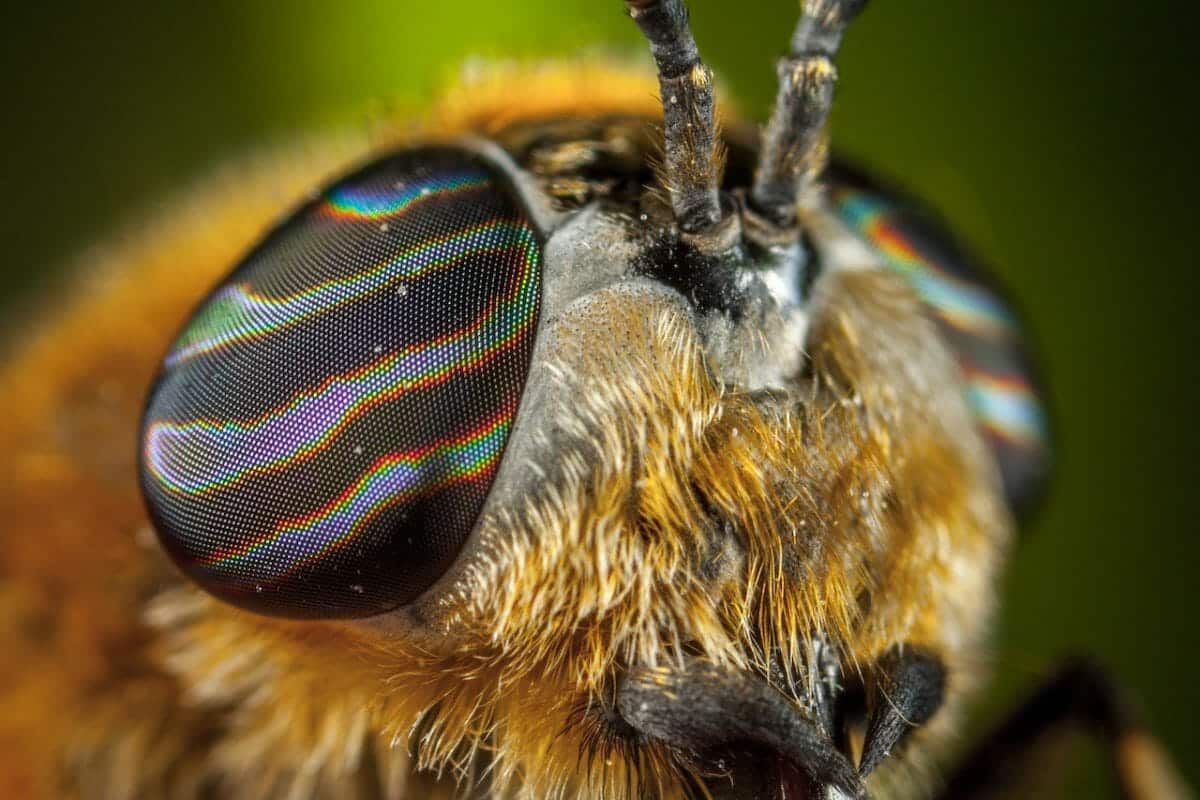

Latest News
How Do Insects See
Published: November 30, 2023
Discover the latest news on how insects see and unravel the fascinating world of their visual perception.
(Many of the links in this article redirect to a specific reviewed product. Your purchase of these products through affiliate links helps to generate commission for Chicagolandgardening.com, at no extra cost. Learn more)
Table of Contents
Introduction
Welcome to the fascinating world of insect vision! Insects, with their incredible array of shapes, sizes, and colors, have long intrigued scientists and nature enthusiasts alike. One of the most remarkable aspects of these tiny creatures is their ability to see the world in ways that are vastly different from our own. While humans possess a single pair of eyes, insects boast a variety of eye types, each with its own unique functionality.
This article will take you on a journey into the intricate world of insect vision, exploring the anatomy of insect eyes and the remarkable adaptations that enable them to perceive their surroundings. Through this exploration, we will gain an appreciation for the extraordinary visual abilities possessed by these small but mighty creatures.
From the compound eyes of flies and bees to the simple eyes found in many other insect species, we will delve into the different types of insect eyes and understand how they contribute to an entomological world rich in visual experiences. We will discover how insects’ eyes are specially adapted to perform tasks such as color vision, motion detection, ultraviolet perception, and polarized light detection.
Understanding insect vision is not only fascinating from a scientific standpoint but also offers insights into the ecological roles insects play in their respective ecosystems. By uncovering the secrets of insect vision, we can gain a deeper appreciation for the intricate connections between these tiny creatures and the natural world around us.
So, join us as we embark on this journey of discovery, unraveling the mysteries of insect vision and gaining a newfound admiration for the incredible visual capabilities that insects possess.
Anatomy of Insect Eyes
To truly appreciate the marvel of insect vision, we must first understand the intricate anatomy of their eyes. Unlike humans, who have a single pair of eyes, insects possess a wide variety of eye structures that enable them to perceive the world in unique ways.
The most common type of insect eye is the compound eye, which is composed of numerous individual lenses, each with its own photoreceptor cell. These lenses, known as ommatidia, work together to create a mosaic-like image. Compound eyes are found in many insects, including flies, bees, and dragonflies.
Each ommatidium functions as a separate visual unit, capturing light from a specific direction. This arrangement allows insects to have a broad field of view, often spanning nearly 360 degrees. However, the trade-off is that they have limited visual acuity compared to creatures with single-lens eyes, like humans.
Alongside compound eyes, many insects possess simple eyes, also known as ocelli. Unlike compound eyes, which are responsible for detecting shapes, colors, and movement, simple eyes are primarily involved in light intensity and direction detection. Simple eyes are typically found in addition to compound eyes and vary in number depending on the insect species.
The precise positioning of compound and simple eyes on an insect’s head depends on its specific needs and behaviors. For example, predators like mantises often have forward-facing compound eyes, allowing them to accurately judge distances and track prey. In contrast, bees and ants possess compound eyes that extend around the sides of their head, granting them a wider field of view to aid in navigation and detecting threats.
The diversity and complexity of insect eye structures are truly remarkable, reflecting the evolution of visual adaptations that have allowed insects to thrive in their respective environments. As we delve deeper into the world of insect vision, we will explore how these eye structures contribute to their incredible visual capabilities.
Compound Eyes
One of the most astonishing visual structures in the insect world is the compound eye. This unique eye type is composed of thousands of individual lenses, known as ommatidia, which function together to create a mosaic-like image of the insect’s surroundings.
The number of ommatidia in a compound eye can vary greatly depending on the insect species, ranging from a few hundred to tens of thousands. For example, a housefly may have around 4,000 ommatidia, while a dragonfly can possess up to 30,000.
Each ommatidium consists of a lens, a crystalline cone, and a cluster of photoreceptor cells. This design allows the insect to detect light coming from multiple directions simultaneously. As a result, they have a wide field of view, an advantageous trait for detecting predators, finding mates, or locating food sources.
While compound eyes offer a panoramic view of the world, the trade-off is that individual ommatidia have limited spatial resolution. This means that insects with compound eyes can see movements and patterns effectively but may not be able to discern fine details.
Another intriguing feature of compound eyes is their ability to detect polarized light. Polarization refers to the alignment of light waves along a specific plane. By perceiving polarized light, insects can navigate using the sun’s position as a reference or even detect the presence of bodies of water, as water surfaces often polarize light.
Furthermore, compound eyes allow insects to excel at motion detection. Thanks to the large number of ommatidia, they can quickly detect small changes in the environment, such as the movement of a potential prey or an approaching predator. This motion sensitivity also aids in flying and maneuvering through complex environments.
The incredible adaptability of compound eyes is evident in various insect species. For instance, bees possess compound eyes that can distinguish a broad range of colors, aiding them in identifying flowers with nectar-rich rewards. Flies have compound eyes that enable them to respond swiftly to visual stimuli, allowing them to escape from threats with remarkable speed.
As we unravel the intricacies of compound eyes, we gain a profound appreciation for the evolution of this remarkable visual structure and the vital role it plays in the survival and success of countless insect species.
Simple Eyes
In addition to compound eyes, many insects possess a set of simple eyes, known as ocelli or ocellus (singular). While compound eyes are responsible for complex visual tasks, simple eyes serve a different purpose, primarily focusing on light intensity and direction detection.
Most insects have three ocelli arranged in a triangular pattern on the top of their head. However, the number and arrangement of ocelli can vary among different insect species. These tiny, single-lens eyes are typically smaller and less conspicuous than compound eyes.
Ocelli lack the complex structure of compound eyes, consisting of a single lens and a small cluster of photoreceptor cells. They are more sensitive to light intensity and can detect variations in brightness. This enables insects to perceive changes in ambient light levels, which can be useful for adjusting their behavior according to the time of day or finding appropriate places to bask in the sun.
Moreover, ocelli are particularly sensitive to rapid changes in light intensity. This property allows insects to respond quickly to sudden movements or shadows, helping them evade potential threats or capture prey more efficiently.
The positioning of ocelli on the insect’s head varies between species. Some insects, like bees, have their ocelli located between their compound eyes. This configuration allows them to have a better understanding of the sun’s position and facilitates navigation during flight.
Ocelli are particularly important for insects with nocturnal or crepuscular lifestyles, as these species rely more heavily on light detection to navigate their surroundings in dimly lit conditions. In these cases, ocelli are crucial for avoiding obstacles and finding shelter.
Although ocelli have limited visual capabilities compared to compound eyes, their simplicity and sensitivity to light changes make them a valuable asset for insects, especially when combined with the comprehensive functions of compound eyes. The intricate interplay between simple and compound eyes allows insects to effectively adapt to their environment and maximize their chances of survival.
Vision in Insects
The vision of insects is a marvel of nature, showcasing a wide range of adaptations that allow them to perceive the world in remarkable ways. With their compound eyes and simple eyes working in tandem, insects have developed a diverse array of visual abilities that suit their specific ecological roles.
One key aspect of insect vision is color perception. While humans possess three types of color receptors (red, green, and blue), insects often have a more limited color vision. Many insect species can perceive ultraviolet light, allowing them to distinguish patterns and colors that are invisible to human eyes. This ability is particularly essential for locating nectar-rich flowers and identifying potential mates with UV-reflective markings.
Another fascinating aspect of insect vision is motion detection. Insects have evolved to excel at detecting and responding to movement, owing to their large number of ommatidia in compound eyes. This motion sensitivity is an asset in escaping predators, capturing prey, and successfully navigating through complex environments. Furthermore, certain insects, such as honeybees, have the ability to analyze optic flow patterns, enabling them to maintain stability and control their flight.
Some insect species possess the ability to detect polarized light, which refers to the way light waves align along specific planes. This unique adaptation allows insects to navigate using the polarization pattern of the sky, helping them to orient themselves and find their way during migration or foraging. Additionally, polarized light detection assists in locating and identifying bodies of water, as the water’s surface often reflects polarized light.
Visual adaptations in insects are not solely limited to their eyes. Some species, such as spiders and scorpions, utilize specialized reflective layers on their exoskeletons to enhance light detection, especially in low-light environments. These adaptations serve to optimize their vision and increase their chances of survival.
The remarkable visual capabilities of insects demonstrate their ability to thrive and survive in diverse habitats. From the precise navigation of bees to the acute prey detection of praying mantises, insect vision plays a crucial role in their foraging, mating, and evading predators.
Understanding how insects perceive the world opens up new avenues of research and appreciation for the intricate beauty and functionality of our natural ecosystems. By examining and appreciating the remarkable vision of insects, we gain insights into the intricate workings of nature and the extraordinary adaptations that enable these small creatures to thrive in their respective environments.
Color Vision
Color vision in insects is a fascinating aspect of their visual repertoire. While humans possess three types of color receptors, enabling us to perceive a vast array of colors, insects have evolved their own unique mechanisms for color vision.
Many insects are sensitive to ultraviolet (UV) light, which falls outside the visible spectrum for humans. This means that insects can perceive patterns and colors that are invisible to our eyes. For example, flowers often have UV-reflective markings, known as nectar guides, which guide pollinators towards their source of nectar. Bees and butterflies, with their UV-sensitive eyes, can easily detect these markings and navigate efficiently to collect nectar.
Some insects have even more specialized color vision adaptations. For instance, butterflies have color receptors that are finely tuned to specific hues, allowing them to differentiate between a wide range of flower colors. This helps them select appropriate host plants for laying their eggs and ensures they can obtain the necessary nectar for energy.
Insects’ color vision not only aids in foraging and reproduction but also plays a role in mate selection. Male butterflies, for example, often have vibrant colors and intricate patterns on their wings, which are used as visual cues to attract female mates. These bright, visually striking displays are a result of both pigments and the microscopic structures on their wing scales that manipulate light reflection, creating dazzling iridescence.
It’s important to note that not all insect species have the same level of color vision. Some insects, such as beetles, have limited color vision and may rely more on other visual cues, such as contrast and brightness, to identify suitable food sources or mating partners. However, even with their lower color discrimination abilities, beetles can still perceive some color information to navigate their environment successfully.
The extraordinary adaptations of color vision in insects provide us with a glimpse into the diverse ways in which these remarkable creatures perceive and interact with their surroundings. By recognizing the significance of color vision in their foraging, reproduction, and overall survival, we gain a deeper appreciation for the complex adaptive strategies that allow insects to thrive in their ecosystems.
Motion Detection
Motion detection is a vital aspect of insect vision, allowing these remarkable creatures to quickly respond to changes in their environment. Insects have evolved sophisticated visual systems that excel at detecting and tracking movements, enabling them to survive and thrive in their ecological niches.
One of the key adaptations for motion detection in insects is the large number of ommatidia in their compound eyes. Each ommatidium works independently, capturing light from a specific direction. By integrating the signals from multiple ommatidia, insects can perceive a wide range of movements happening around them.
Thanks to this vast amount of visual information, insects have impressive motion sensitivity. They can rapidly detect minute changes in their surroundings, such as the movement of potential prey or an approaching predator. This heightened motion detection is especially crucial for insects with fast flight, as it allows them to navigate through complex environments with precision and avoid obstacles or other organisms in their path.
Some insects, like bees and some flies, possess an additional adaptation called “lobular organization” in their compound eyes. This feature enhances their ability to detect motion in specific directions. For instance, bees have dedicated frontal ommatidia that are more sensitive to horizontal motion, helping them accurately judge distances and navigate through their complex foraging landscapes.
Motion detection is particularly essential for predatory insects, such as mantises and dragonflies, that rely on their visual acuity and agility to capture prey. These hunters possess remarkable reflexes, allowing them to strike with incredible speed and accuracy. Their ability to track and predict the movement of their prey is a testament to the exceptional motion detection capabilities of their visual systems.
In addition to detecting external movement, insects are also adept at analyzing their own movement. They do this by perceiving optic flow patterns, which occur when objects in the environment appear to move relative to the insect’s own movement. This optic flow provides insects with crucial information about their flight speed, direction, and stability. By continuously monitoring and adjusting their flight based on optic flow cues, insects are able to navigate and maneuver with impressive agility.
The incredible motion detection abilities of insects provide valuable insights into their behavior, survival strategies, and ecological roles. Their finely tuned visual systems allow them to quickly react to environmental changes, securing their place as efficient flyers, agile predators, and skilled navigators in the complex world of insects.
Ultraviolet Vision
Insects possess a remarkable adaptation known as ultraviolet (UV) vision, which allows them to perceive a hidden world of patterns and colors that are invisible to the human eye. This ability to detect and respond to UV light plays a critical role in the lives of many insect species.
Unlike humans, who have three color receptors sensitive to red, green, and blue light, insects often have a fourth receptor that is sensitive to UV wavelengths. This additional receptor expands their visual spectrum, giving them access to a vast array of colors and patterns that occur in the UV range.
UV vision is particularly crucial in the lives of pollinators such as bees, butterflies, and other flower-visiting insects. Many flowers have evolved UV-reflecting patterns, known as nectar guides, that guide pollinators towards the nectar-rich parts of the flower. These guides may be invisible to human observers, but they stand out vividly to insects with UV vision, serving as beacons pointing the way to a rewarding nectar source.
In addition to guiding insects to flowers, UV vision aids in mate selection. Insects often have UV-reflective markings on their bodies, such as patches or stripes, which can serve as signals to potential mates. These markings play a crucial role in species recognition and can help ensure successful reproduction.
Ultraviolet vision also has ecological implications beyond individual species interactions. For instance, certain bird species, such as the Eurasian jay, are known to be UV-sensitive. Some studies suggest that these birds utilize UV vision to locate and identify insects, which may be an important food source for them.
Furthermore, UV vision assists insects in locating and identifying objects in their environment. For example, certain spiders build UV-reflective silk threads in their webs, which are highly visible to insects. This gives them an advantage in attracting prey, as the UV-reflective threads act as beacons, drawing insects towards the web.
The ability to perceive and respond to ultraviolet light opens up a whole new dimension of perception for insects. The UV-reflective patterns and colors that exist in their visual world play important roles in their foraging, mating, and even predator-prey interactions.
Understanding the importance and intricacies of ultraviolet vision in insects gives us a deeper appreciation for the complexity and diversity of their visual systems. It also highlights the fascinating ways in which these small creatures have adapted to their environments and interact with the world around them.
Polarized Light Detection
Insects possess a unique ability to detect and respond to polarized light, which plays a crucial role in their navigation, communication, and survival strategies. Polarized light detection is an adaptation that allows insects to perceive and utilize the distinctive patterns and orientations of light waves.
When light waves interact with certain surfaces or travel through specific media, they become polarized, meaning their waves align along a specific plane. Insects have specialized visual structures that enable them to detect the polarization of light and utilize it as a navigational tool.
Polarized light detection allows insects to determine the position of the sun, even on cloudy days or when it is hidden below the horizon. This ability, known as celestial compass navigation, aids in their orientation and helps them maintain a sense of direction when foraging, migrating, or finding their way back to the nest.
Moreover, polarized light detection assists insects in locating bodies of water. Water surfaces often polarize light, and certain insects, like water bugs and dragonflies, can use these polarized reflections to identify water sources in their environments. This is crucial for their survival, as they require water for mating, reproductive activities, and maintaining hydration.
Polarized light detection has also been linked to communication and mate selection in some insect species. For example, certain male dragonflies possess bright, iridescent patches on their wings that reflect polarized light. These patches may serve as visual signals to attract and communicate with potential mates.
Furthermore, some insects, such as bees, utilize polarization patterns as part of their foraging strategies. Research suggests that bees may use the polarized light “halo” around flowers to help them identify potential nectar-rich sources.
The capability of insects to detect and utilize polarized light has captivated scientists for years, highlighting the incredible adaptability and sophistication of their visual systems. By perceiving and interpreting the patterns and orientation of polarized light, insects gain valuable information about their environment, allowing them to navigate, communicate, and make critical survival decisions.
Studying polarized light detection offers us a glimpse into the hidden world that insects perceive, opening up new avenues for understanding their behaviors and interactions within their ecosystems. It also emphasizes the remarkable sensory adaptations that insects have evolved to thrive in diverse and challenging environments.
Visual Adaptations in Insects
Insects have evolved a remarkable array of visual adaptations that allow them to thrive in their respective environments. These adaptations, which are often specific to their ecological niches and lifestyles, enable insects to perceive and interact with their surroundings in extraordinary ways.
One of the most prominent visual adaptations in insects is the presence of compound eyes. The thousands of individual lenses, or ommatidia, in compound eyes provide a wide field of view, allowing insects to detect movements and changes in their environment. This broad visual coverage is advantageous for detecting threats, finding mates, and locating food sources.
Alongside compound eyes, many insects possess simple eyes, or ocelli. These additional visual structures primarily focus on light intensity and direction detection. Ocelli enhance insects’ ability to perceive changes in ambient light levels, aiding in behavior adjustments according to the time of day and facilitating their navigation in their habitats.
Color vision is another significant visual adaptation seen in many insect species. While humans have three color receptors, insects often have a broader range of color receptors, including sensitivity to ultraviolet (UV) light. UV vision allows them to perceive patterns and colors that are invisible to human eyes, aiding in tasks such as locating nectar-rich flowers, identifying potential mates, and even finding prey.
Motion detection is a vital visual adaptation in insects, facilitated by their large number of ommatidia in compound eyes. This abundance of visual units allows insects to rapidly detect and respond to movements in their environment, aiding in navigation, prey capture, and predator avoidance. Insects’ exceptional motion sensitivity is especially critical for agile flyers and predatory species.
Polarized light detection is a fascinating visual adaptation found in many insect species. Insects can perceive and utilize the alignment of light waves along a specific plane, allowing them to navigate using the sun’s position as a reference point and to identify bodies of water, which often reflect polarized light. This adaptation enhances their ability to orient themselves and find essential resources.
Furthermore, some insects possess specialized adaptations beyond their visual organs. For example, certain spider species have reflective layers on their exoskeletons that enhance light detection in low-light environments, providing them with a visual advantage in hunting and survival.
These visual adaptations in insects demonstrate the incredible diversity and efficiency of their visual systems. They reveal the dynamic and complex ways in which insects perceive and interact with their environment, highlighting their ability to adapt to various ecological niches and fulfill essential roles in their ecosystems.
Studying these visual adaptations not only deepens our understanding of the natural world but also inspires awe and appreciation for the intricate and extraordinary adaptations that enable insects to thrive in their respective habitats.
Conclusion
The world of insect vision is a fascinating realm of adaptation and specialized abilities. From their compound eyes to their simple eyes, insects possess a visual system that allows them to perceive the world in extraordinary ways. Through color vision, they can detect ultraviolet light and uncover hidden patterns and signals. Motion detection enables them to swiftly respond to changes in their environment, aiding in navigation and survival. Their ability to detect polarized light gives them a unique perspective on their surroundings, aiding in orientation and the identification of resources. These visual adaptations, along with others such as the unique features found in their compound and simple eyes, contribute to the remarkable diversity and efficiency of their visual systems.
The study of insect vision not only provides insights into the ecology and behavior of these remarkable creatures but also offers inspiration for technological advancements. Scientists and engineers have looked to insect vision as a source of inspiration for developing technologies such as miniature cameras, motion sensors, and navigation systems based on polarized light detection. By understanding the intricacies of insect vision, we gain not only a deeper appreciation for the natural world but also knowledge that can guide innovations in various fields.
The adaptability and sophistication of insect vision highlight the incredible complexity of nature’s designs. These visual adaptations have allowed insects to conquer diverse environments, navigate complex landscapes, find mates, locate food sources, and escape predators. The intricate interplay between their compound eyes, simple eyes, and other sensory adaptations showcases the remarkable ability of insects to thrive in their respective ecological niches.
As we continue to explore the world of insect vision, there is still much to uncover and understand. The study of these adaptations opens up new avenues for research and appreciation, shedding light on the intricate workings of the natural world and reminding us of the marvels that lie within even the smallest creatures.
So, let us continue to marvel at the wonders of insect vision, diving deeper into the mysteries of their visual capabilities, and finding inspiration in their remarkable adaptations.

